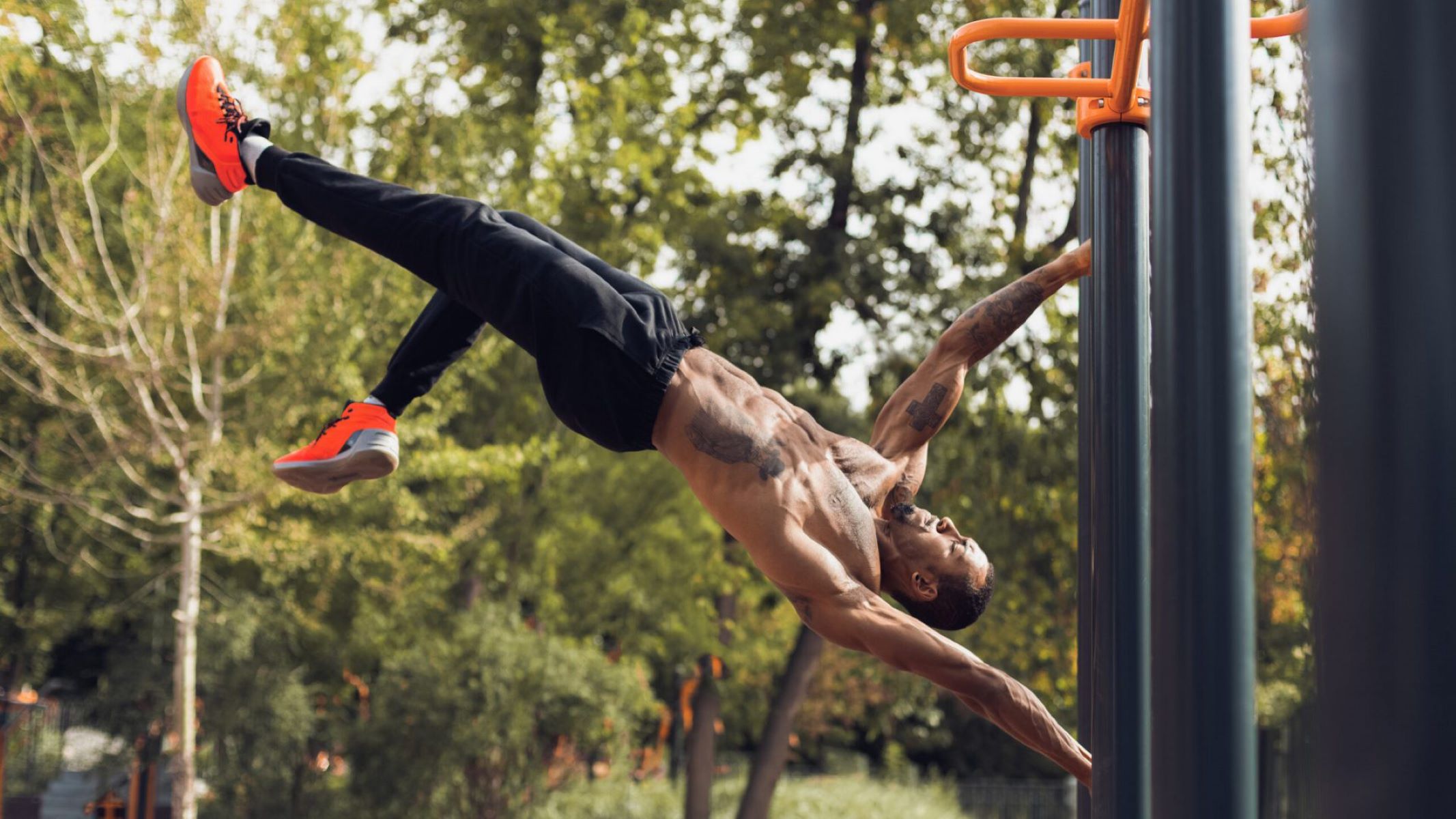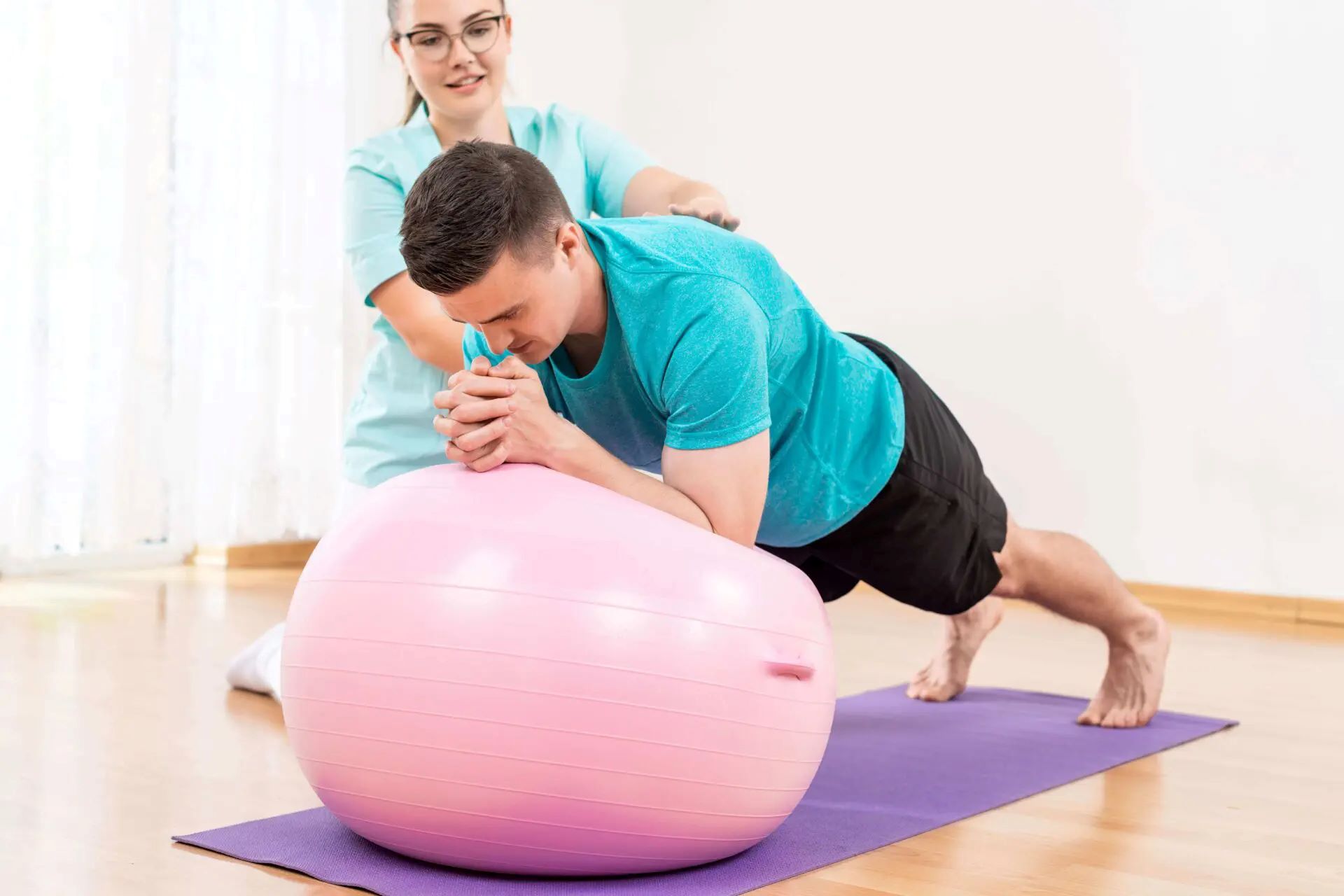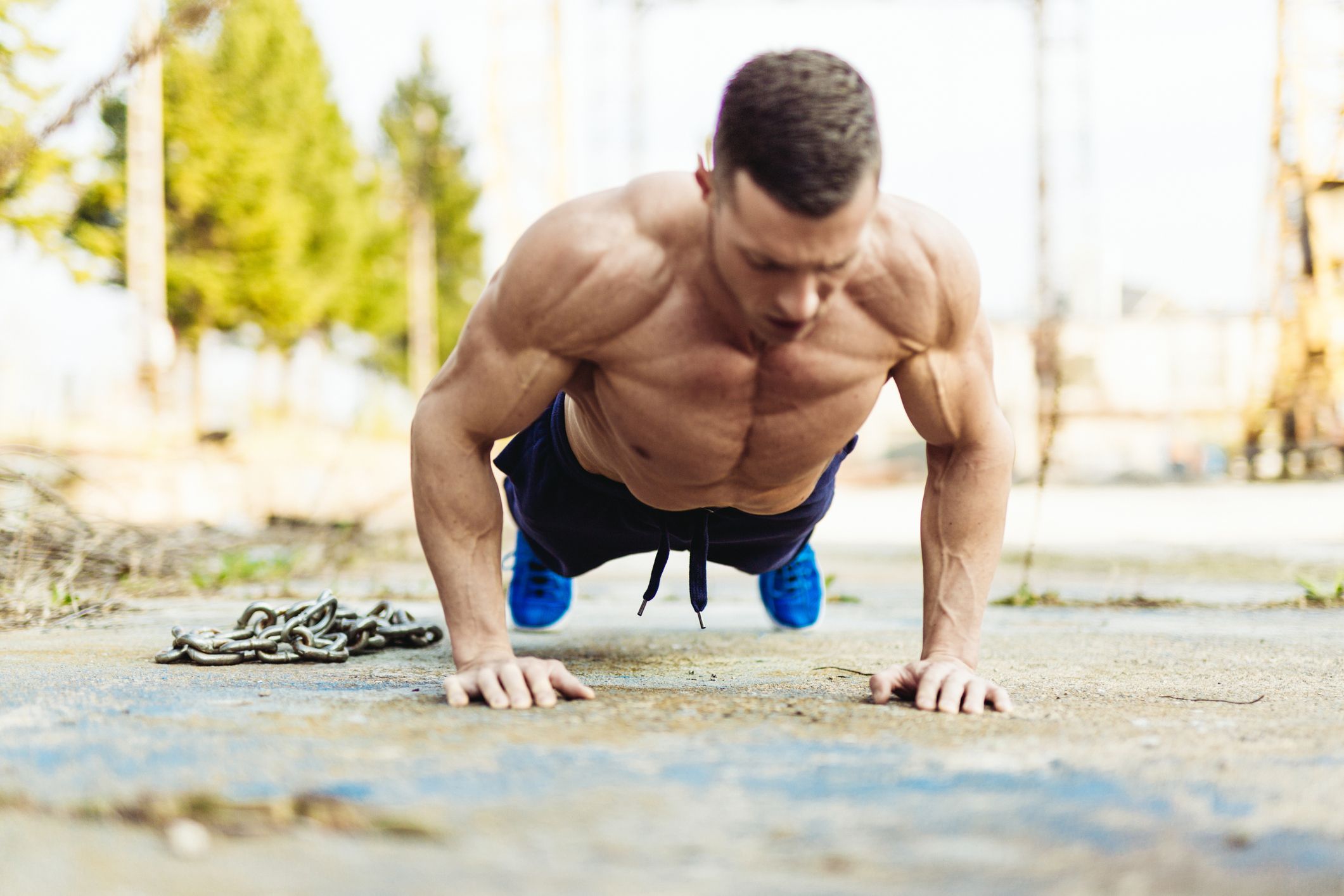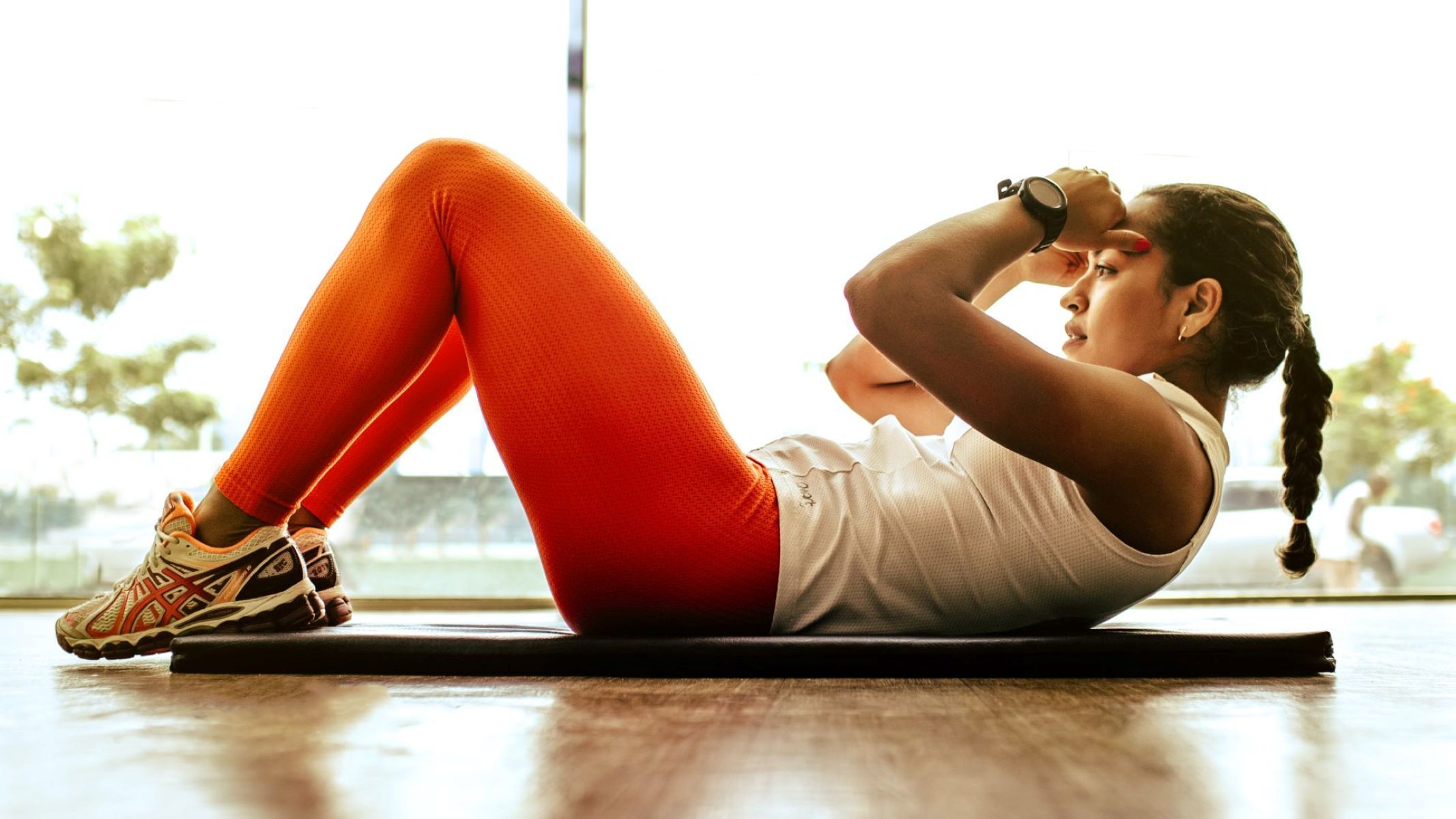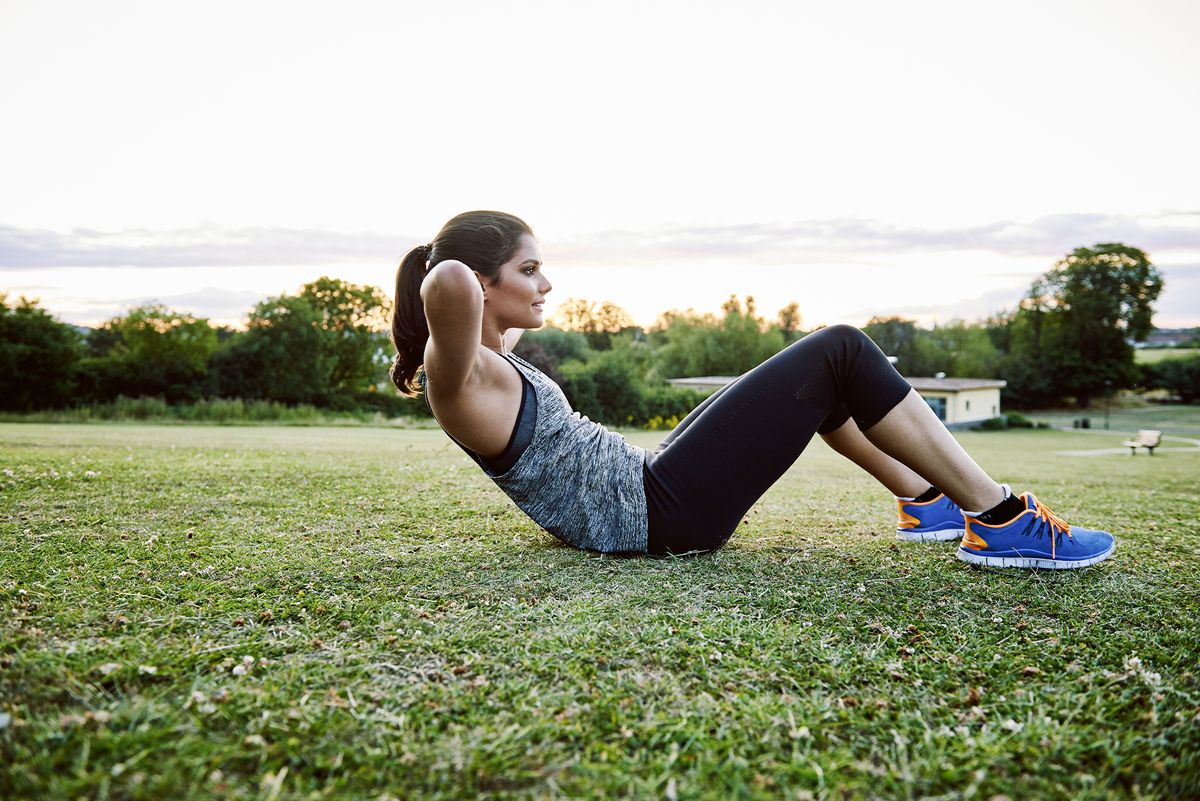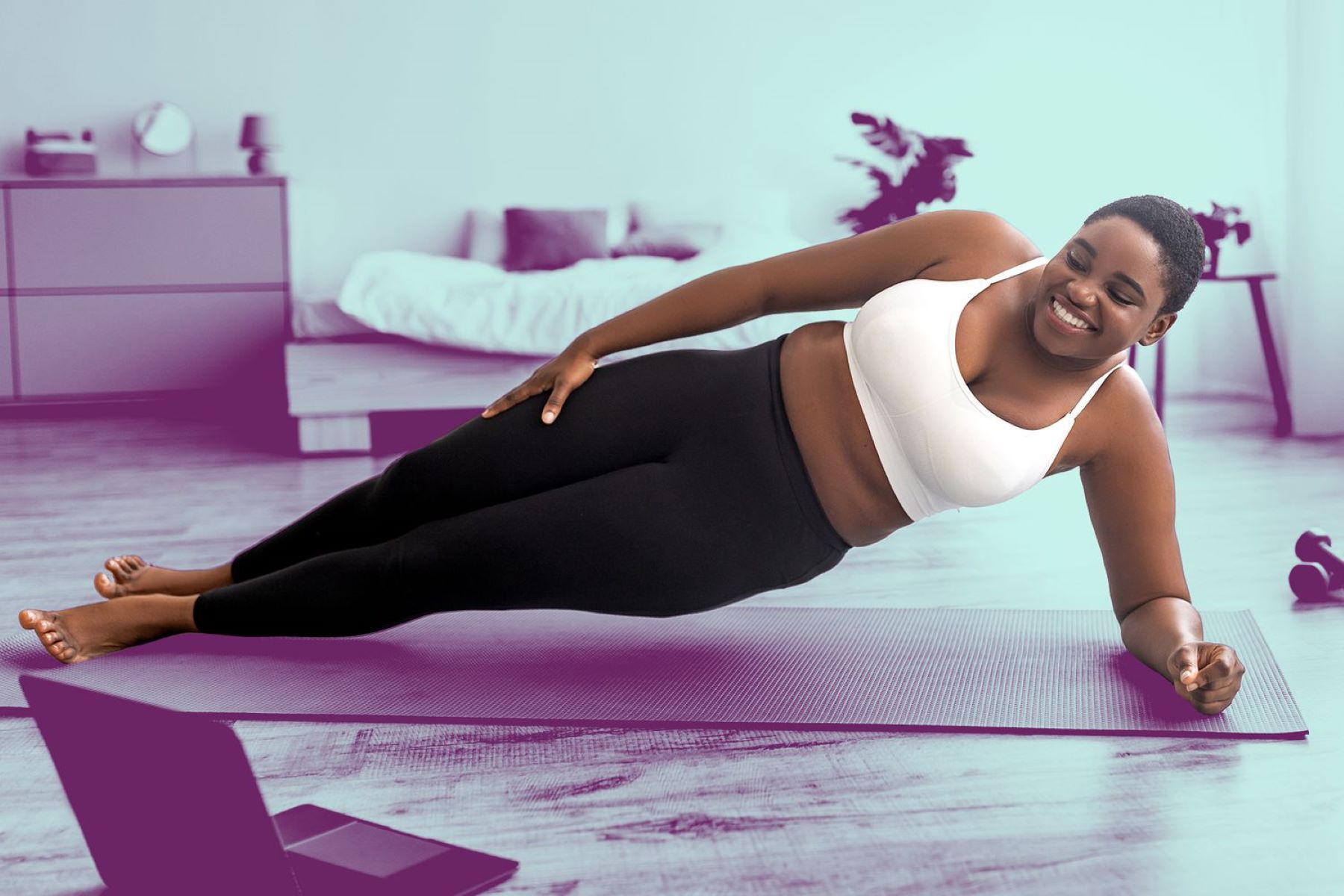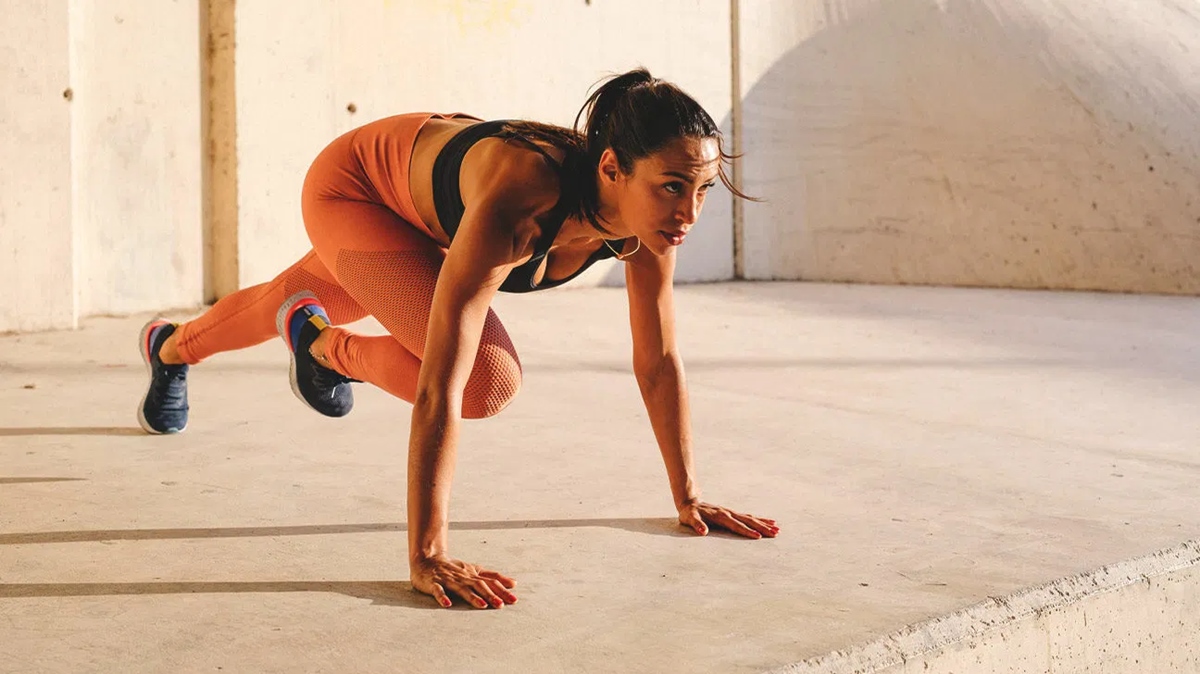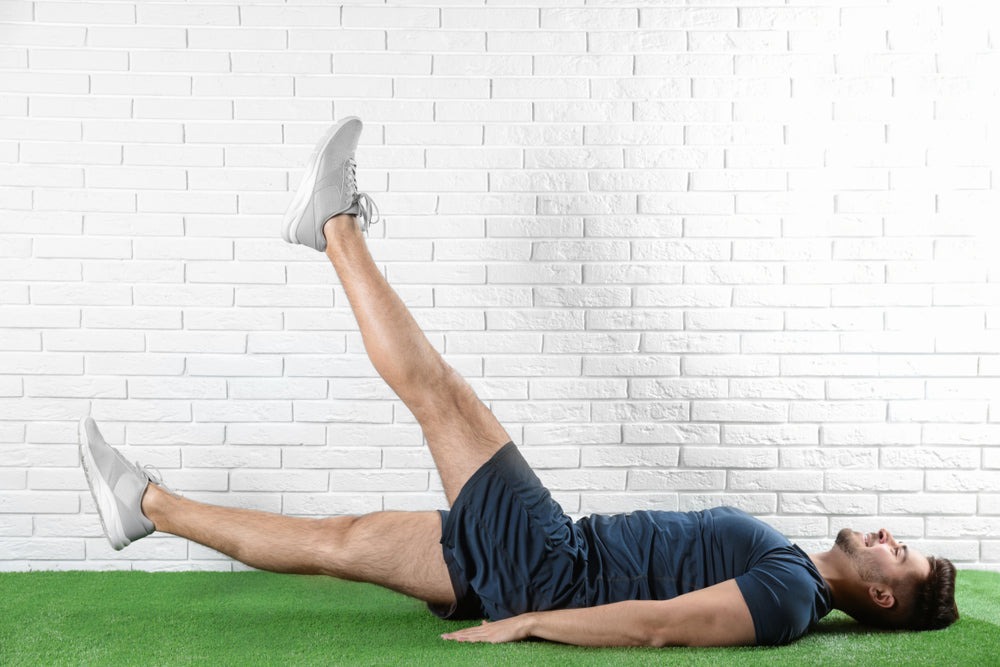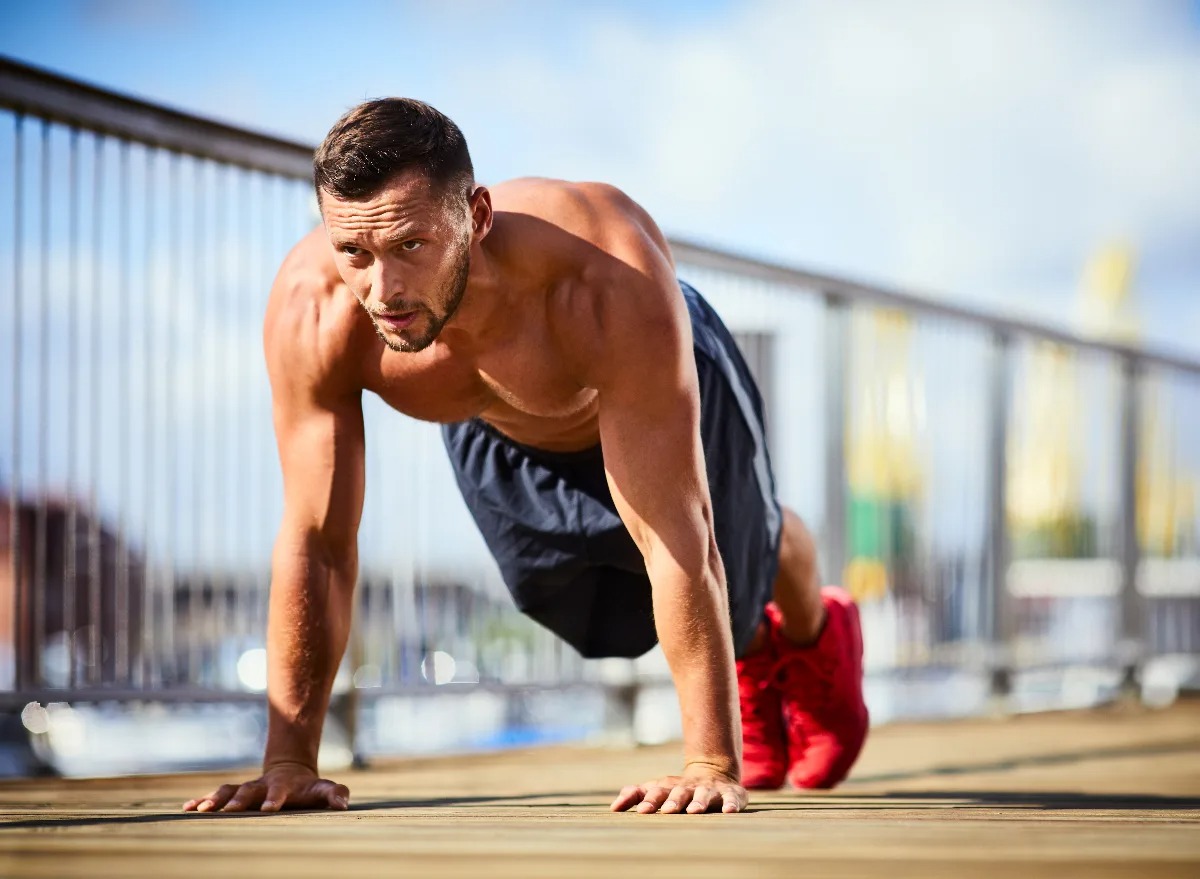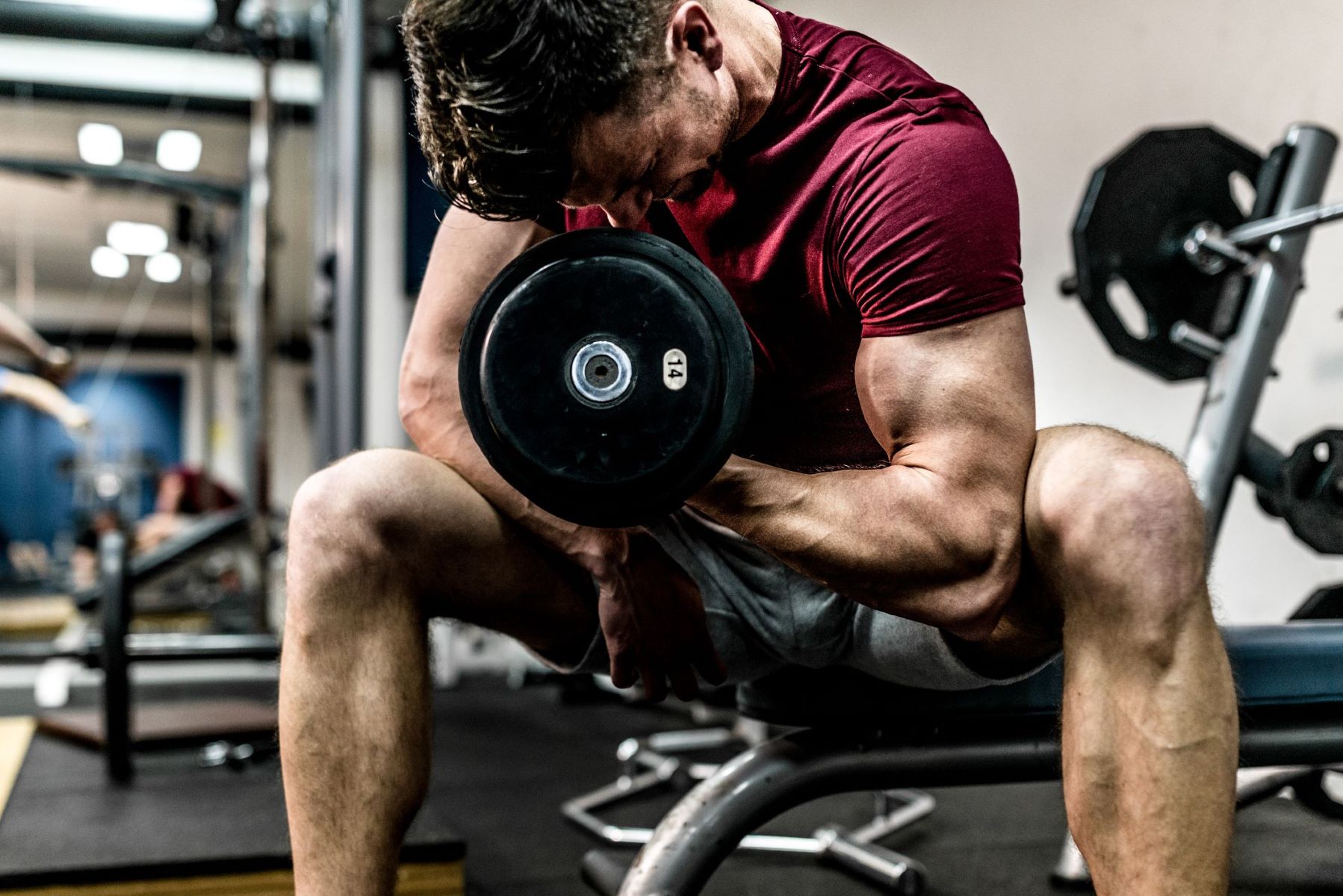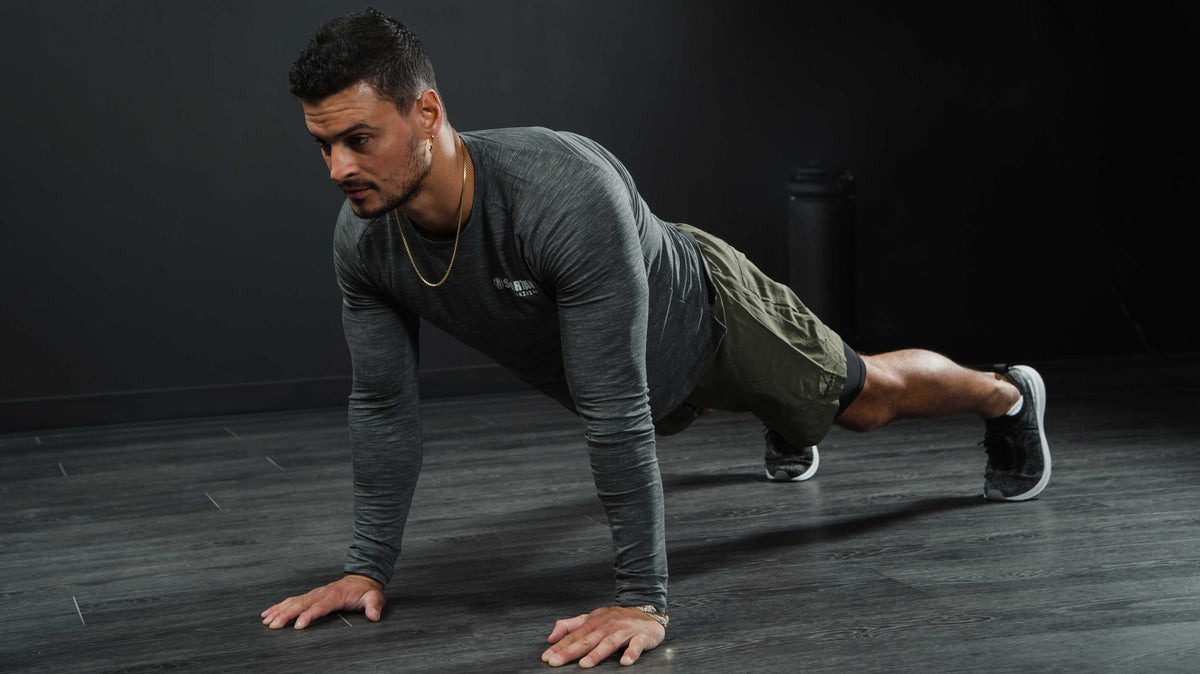

Featured
What Is The Best Exercise For Abs
Modified: January 22, 2024
Discover the best exercise for abs and sculpt your core with Featured workouts. Get expert tips and techniques to achieve your fitness goals.
Introduction
Your abdominal muscles, commonly known as abs, play a crucial role in supporting your spine, protecting your organs, and improving overall stability and posture. Having strong abs not only enhances your physical appearance but also contributes to your overall health and athleticism.
When it comes to sculpting the perfect six-pack, there seems to be a never-ending debate about which exercise reigns supreme. From traditional crunches to planks, Russian twists, mountain climbers, and bicycle crunches, there are countless exercises claiming to be the best for targeting and strengthening the abdominal muscles.
However, it’s important to understand that the effectiveness of an ab exercise can vary depending on multiple factors, such as your fitness level, goals, and individual body mechanics. In this article, we will delve into the world of ab exercises, exploring the benefits of each and helping you determine which exercises might be the best fit for your specific needs.
Before we dive into the specifics, it’s crucial to note that while ab exercises can help strengthen and tone your midsection, they alone will not magically melt away belly fat. To reveal your abs, you need to combine regular ab exercises with a healthy, balanced diet and a comprehensive fitness routine that includes cardiovascular exercise and strength training for your entire body.
So, whether you’re aiming for a shredded six-pack or simply looking to improve core strength, join us on this journey as we explore some of the most popular and effective ab exercises. Let’s find out which one could be the best exercise for carving out those coveted abs!
Understanding the Importance of Strong Abs
Strong abdominal muscles play a key role in maintaining a healthy body and improving overall physical performance. Abs, consisting of several muscles including the rectus abdominis, transverse abdominis, and obliques, provide stability and support to the spine and pelvis.
One of the primary benefits of strong abs is improved posture. When your abdominal muscles are strong, they help to keep your spine aligned properly, reducing strain on your lower back and minimizing the risk of postural issues such as lordosis or kyphosis. Good posture not only contributes to a more confident and attractive appearance, but it also reduces the risk of injuries and chronic pain.
In addition, strong abs contribute to better athletic performance. Whether you’re a professional athlete or someone who enjoys recreational sports, having a strong core is essential. It improves your balance, stability, and proprioception, allowing you to perform better in sports that require quick movements, changing directions, or resisting external forces.
Besides the aesthetic benefits, strong abs also enhance your overall functional strength. Your core muscles are involved in almost every movement you make, from bending and lifting to twisting and reaching. They provide a strong foundation for movement and help transfer force between your upper and lower body, making everyday activities easier and reducing the risk of injuries.
Moreover, strong abs can improve your breathing and digestion. The diaphragm, a muscle involved in respiration, is closely connected to the core muscles. When your core is weak, it can restrict the movement of the diaphragm, leading to shallow breathing. Strong abs help to support the diaphragm, allowing for a full range of breath and optimal oxygen exchange. Additionally, the transverse abdominis, the deep muscle in your abs, plays an important role in the function of the digestive organs, facilitating proper digestion and reducing the risk of gastrointestinal issues.
In summary, having strong abs is not just about the appearance of a chiseled six-pack. It has numerous functional benefits, including improved posture, enhanced athletic performance, increased functional strength, and better breathing and digestion. Now that you understand the importance of strong abs, let’s explore the factors that you should consider when choosing the most effective ab exercises.
Factors to Consider for Effective Ab Exercises
When it comes to choosing the most effective ab exercises for your fitness goals, it’s important to consider several factors that can influence the effectiveness and safety of your workout routine. Here are some key factors to keep in mind:
- Fitness Level: Your current fitness level plays a significant role in determining the difficulty level of ab exercises you should perform. Beginners may need to start with exercises that focus on building core stability before progressing to more challenging movements.
- Goals: Clearly defining your goals will help you choose the right ab exercises. Are you aiming for general core strength, muscle endurance, or a sculpted six-pack? Different exercises target different aspects of the abdominal muscles, so align your exercise selection with your desired outcomes.
- Proper Form and Technique: Performing exercises with correct form and technique is crucial for efficiency and injury prevention. Poor form can lead to ineffective results or even strain on your lower back. Take the time to learn the proper form for each exercise and consult with a fitness professional if needed.
- Variety and Progression: To avoid plateauing and keep your muscles challenged, it’s important to incorporate a variety of ab exercises into your routine. Progression, such as increasing the difficulty or intensity of exercises over time, also helps to continue challenging your muscles and promoting growth.
- Time and Convenience: Consider how much time you can dedicate to your ab exercises and whether you prefer exercises that can be done at the gym or in the comfort of your own home. This will help you choose exercises that fit your lifestyle and schedule.
- Individual Body Mechanics: Every individual has unique body mechanics, including strengths, weaknesses, and flexibility. It’s essential to choose exercises that work well with your body type and align with your specific needs and limitations.
- Complementary Exercises: While ab exercises are important for strengthening your core, it’s essential to incorporate other exercises into your routine that target different muscle groups. A balanced, full-body workout routine will help improve overall strength and prevent imbalances or injuries.
By considering these factors, you can tailor your ab workout routine to meet your specific needs and ensure that you’re performing exercises that will bring you the best results. With that in mind, let’s dive into some popular ab exercises and explore their benefits in the next section.
Popular Ab Exercises and their Benefits
There are various ab exercises that target different areas of the abdominal muscles and offer unique benefits. Let’s explore some of the most popular ones:
- Crunches: Crunches are a classic ab exercise that primarily targets the rectus abdominis, the muscle responsible for the coveted six-pack appearance. They help to strengthen the upper abdominal muscles and can be performed in different variations to target specific areas. Crunches also engage the hip flexors and obliques to a certain extent.
- Planks: Planks are a powerful exercise for building core strength, targeting not only the abs but also the obliques, lower back, and glutes. They improve overall stability, endurance, and posture. Planks can be modified to increase or decrease the difficulty level and can be done in a static position or with additional movement variations.
- Russian Twists: Russian twists are a dynamic exercise that targets the obliques and engages the entire core. They involve twisting motion, simulating the rotation movement commonly encountered in sports and daily activities. Russian twists help improve core stability, rotational power, and balance.
- Mountain Climbers: Mountain climbers are a high-intensity exercise that not only targets the abs but also the entire core, shoulders, and legs. They are performed in a plank position with alternating knee drives, mimicking climbing motion. Mountain climbers improve core strength, cardiovascular endurance, and coordination.
- Bicycle Crunches: Bicycle crunches are a combination exercise that targets both the abs and obliques. They involve a twisting motion, simulating the pedaling motion of a bicycle. Bicycle crunches engage the entire core, improve stability, and work the upper and lower abs simultaneously.
Each of these exercises offers unique benefits and addresses different aspects of abdominal strength and development. However, it’s important to note that no single exercise is the “best” for everyone. The effectiveness of an exercise depends on factors such as fitness level, goals, and individual body mechanics. To maximize results, it’s recommended to incorporate a combination of these exercises into your ab workout routine.
In the next sections, we will take a closer look at the individual exercises discussed and delve into their specific benefits, helping you determine the exercise that might be the best fit for your needs and goals.
Crunches: Are They the Best Exercise for Abs?
Crunches have long been considered a go-to exercise for sculpting strong and defined abs. They are popular because they effectively target the rectus abdominis, the front muscles that create the six-pack appearance. However, whether crunches are the best exercise for abs depends on various factors.
One of the key advantages of crunches is their simplicity and accessibility. They can be performed without any equipment and can be easily modified to increase or decrease the difficulty level. Crunches primarily focus on flexing the spine and contracting the upper abdominal muscles.
While crunches can help strengthen the abs and improve core stability, they have some limitations. By solely relying on crunches for abdominal conditioning, you may neglect other crucial muscles, such as the obliques and deeper core muscles like the transverse abdominis. Overemphasis on crunches can also lead to muscle imbalances and postural issues if not balanced with exercises that promote overall core strength and stability.
Furthermore, it’s important to note that crunches alone will not magically reduce belly fat or result in a visible six-pack. Spot reduction of fat is not possible, and achieving visible abdominal muscles requires a low body fat percentage, which is best achieved through a combination of proper nutrition, cardiovascular exercise, and a comprehensive strength training routine.
However, when performed correctly and as part of a well-rounded workout routine, crunches can be a valuable exercise for strengthening the abdominal muscles and improving core stability. They can be incorporated into a diverse range of ab workouts to target the upper abs.
Ultimately, the effectiveness of crunches as the best exercise for abs depends on individual fitness goals, body mechanics, and preferences. It is essential to listen to your body, consult with a fitness professional if needed, and incorporate a variety of exercises into your ab workout routine to ensure balanced, comprehensive core strength and development.
Planks: A Powerful Exercise for Core Strength
When it comes to building strong and functional abs, planks are often hailed as one of the most effective exercises. Planks are a powerful exercise for developing core strength and stability, targeting not only the abs but also the obliques, lower back, and glutes.
What sets planks apart is their ability to engage multiple muscles simultaneously. By assuming and maintaining a static position, you activate the muscles that support and stabilize the spine and pelvis, resulting in improved posture and reduced risk of back pain.
One of the major benefits of planks is their versatility and scalability. They can be easily modified to suit different fitness levels and variations can be introduced to keep challenging the muscles as you progress. For beginners, starting with a forearm plank, where you rest your forearms on the ground instead of keeping your hands extended, can be less demanding while still providing significant benefits.
Planks not only strengthen the superficial abdominal muscles but also target the deep core muscles, including the transverse abdominis. Strengthening these deep core muscles is critical for optimal stability, as they act as a natural corset, supporting the entire midsection and protecting the spine.
Besides core strength, planks can also contribute to improved balance, flexibility, and endurance. Holding a plank position challenges your muscles to maintain stability, which translates to better balance in everyday activities and various sports. Planks also help enhance flexibility, particularly in the posterior chain, as the exercise stretches and lengthens the muscles in the shoulders, hamstrings, and calves.
Additionally, planks are a time-efficient exercise, making them suitable for those with busy schedules. Even a short duration of holding a plank can provide significant benefits, as stability and strength are emphasized over repetitive movements.
It’s crucial to maintain proper form while performing planks. Ensure that your body forms a straight line from head to heels, engage your core, and avoid sagging or lifting your hips too high. Gradually increase the duration and intensity of your planks as your strength improves.
Incorporating planks into your ab workout routine can significantly contribute to developing a strong and resilient core. However, while planks are an excellent exercise, it’s essential to combine them with other exercises that target different aspects of core strength and stability to achieve a well-rounded abdominal workout.
Now that we’ve explored the benefits of planks, let’s move on to the next section, where we’ll discuss Russian twists, another dynamic exercise for building strong abs.
Russian Twists: A Dynamic Exercise for Strong Abs
When it comes to targeting the obliques and developing rotational power, Russian twists are a dynamic exercise that can help strengthen and define your abs. This exercise is named after its popularity in Russian martial arts training and is widely recognized for its effectiveness in building core strength.
Russian twists are performed by sitting on the ground with knees bent, leaning back slightly, and lifting your feet off the floor. While maintaining a strong core and keeping your back straight, you rotate your torso from side to side, touching the ground or an object with your hands on each side.
What makes Russian twists unique is their ability to engage both the rectus abdominis, the front muscles that create the six-pack appearance, and the obliques, the muscles on the sides of your waist. The rotational movement targets the obliques, helping to develop strength and definition in these areas.
In addition to targeting the abs, Russian twists also engage the hip flexors, lower back muscles, and shoulders, creating a total core engagement. This exercise challenges your stability, coordination, and balance, making it a valuable addition to any core-focused routine.
Russian twists are not only effective in building strong abs and obliques but also have functional applications. Many sports and activities require rotation and twisting movements, such as golf swings, tennis serves, and even day-to-day movements like reaching for an object on the side or turning to look behind you.
When performing Russian twists, it’s important to maintain proper form. Keep your back straight, engage your core throughout the movement, and avoid excessive twisting or strain on the neck. You can also modify the exercise by using a weight, such as a dumbbell or medicine ball, to increase the intensity and resistance.
However, like with any exercise, it’s essential to approach Russian twists with caution if you have any pre-existing back issues. Consult with a fitness professional or modify the exercise to accommodate your specific needs and limitations.
Incorporating Russian twists into your ab workout routine can add variety and challenge to target the obliques and improve rotational strength and stability. However, to achieve a well-rounded and balanced core workout, it’s recommended to combine Russian twists with other exercises that target different areas of the abdominals and incorporate overall core strength and stability.
Now, let’s move on to the next section, where we’ll explore mountain climbers, a high-intensity exercise that engages the entire core and offers numerous benefits.
Mountain Climbers: An Effective Exercise for Total Core Engagement
If you’re looking for an exercise that engages your entire core while providing a cardiovascular challenge, mountain climbers are an excellent choice. Mountain climbers are a dynamic exercise that targets the abs, obliques, hip flexors, and shoulders, making it highly effective for total core engagement.
To perform mountain climbers, start in a high plank position with your hands directly under your shoulders and your body forming a straight line from head to heels. From this position, alternate driving your knees toward your chest, as if you’re climbing a mountain. The rapid and alternating movements in mountain climbers elevate your heart rate, making it a great exercise for cardiovascular conditioning as well.
One of the major benefits of mountain climbers is their ability to activate the entire core. As you bring your knees toward your chest, your abs and obliques engage to stabilize your body and support the movement. Simultaneously, your hip flexors work to bring your legs forward, and your shoulders and arms contribute to upper body stability.
Mountain climbers are a highly efficient exercise, as they provide a cardiovascular challenge while engaging multiple muscle groups. By incorporating mountain climbers into your workout routine, you can boost your metabolism, burn calories, and work on developing a strong and defined core at the same time.
In addition to core strength and cardiovascular benefits, mountain climbers also improve coordination, agility, and overall body awareness. The rapid alternating leg movements challenge your coordination skills, while the core stability required in maintaining the plank position enhances body awareness and control.
To get the most out of mountain climbers, it’s important to maintain proper form throughout the exercise. Keep your core engaged, avoid sagging or lifting your hips too high, and focus on driving your knees toward your chest with control.
Like any exercise, mountain climbers should be approached with caution if you have any pre-existing shoulder, wrist, or lower back issues. Modify the exercise by performing it at a slower pace or reducing the range of motion if needed.
Incorporating mountain climbers into your ab workout routine can bring diversity and intensity while targeting your entire core and getting your heart pumping. However, it’s important to balance your workout with other exercises that target different areas of the abdominals and provide overall strength and stability for a well-rounded core routine.
Now, let’s move on to the next section, where we’ll discuss bicycle crunches, a combination exercise that targets both the abs and obliques effectively.
Bicycle Crunches: A Combination Exercise for Abs and Obliques
If you’re looking for an exercise that targets both the abs and obliques simultaneously, bicycle crunches are an excellent choice. This combination exercise is highly effective for building strength and definition in your abdominal muscles.
To perform bicycle crunches, start by lying on your back with your knees bent and your hands gently supporting your head. Lift your shoulders off the ground, engage your core, and bring your right elbow towards your left knee as you extend your right leg out. Then, switch sides, bringing your left elbow towards your right knee as you extend your left leg out. Continue alternating sides in a pedaling motion.
Bicycle crunches are beneficial for several reasons. Firstly, they target the abs, specifically the rectus abdominis, which is responsible for the “six-pack” appearance. By lifting your shoulders off the ground and bringing your knees towards your elbows, you engage your upper abdominal muscles.
Additionally, bicycle crunches effectively target the obliques, the muscles on the sides of your waist. The twisting motion involved in the exercise engages and strengthens these muscles, contributing to a more defined and sculpted core.
Another advantage of bicycle crunches is their ability to engage and challenge multiple muscle groups simultaneously. While primarily targeting the abs and obliques, bicycle crunches also engage the hip flexors, quadriceps, and even the lower back muscles to a certain extent.
Like with any exercise, proper form is crucial for getting the most out of bicycle crunches and avoiding strain or injury. Maintain a relaxed neck and avoid pulling on your head with your hands. Focus on engaging your core throughout the movement and exhale as you twist, bringing your elbow and knee together.
For added intensity, you can increase the speed of your pedaling motion or hold a weight, such as a medicine ball, in your hands as you perform the exercise. However, it’s important to choose the appropriate resistance and maintain proper form throughout the movement.
Bicycle crunches can be incorporated into your ab workout routine to target both the abs and obliques effectively. However, it’s essential to combine them with other exercises that work different areas of the abdominals and provide overall core strength and stability for a well-rounded workout.
Now that we’ve explored bicycle crunches, let’s recap the different ab exercises we’ve covered and highlight the importance of incorporating them into a comprehensive abdominal workout routine.
Conclusion
When it comes to achieving strong and defined abs, there isn’t a one-size-fits-all approach or a single exercise that reigns supreme. Instead, it’s important to understand the importance of overall core strength and stability, as well as the different factors to consider when choosing ab exercises.
We explored various popular ab exercises, each with its own unique benefits. Crunches target the upper abdominal muscles and can be a valuable addition to your routine, but they should be balanced with exercises that promote overall core strength. Planks engage the entire core and provide stability and postural benefits, making them a powerful exercise for strengthening the abs. Russian twists target the obliques and involve rotational movements for better functional strength. Mountain climbers combine cardiovascular fitness with total core engagement. Bicycle crunches work both the abs and obliques through a pedaling motion.
To design an effective ab workout routine, it’s important to consider factors such as your fitness level, goals, proper form and technique, variety and progression, time and convenience, individual body mechanics, and complementary exercises. By taking these factors into account, you can tailor a routine that suits your needs and helps you achieve the desired results.
Remember, building strong and defined abs requires a holistic approach. Incorporate a healthy and balanced diet, cardiovascular exercise, and strength training for your entire body to reduce overall body fat and reveal your abdominal muscles. Additionally, prioritizing proper form, listening to your body, and allowing for rest and recovery are essential elements of any successful fitness journey.
So, whether your goal is to have a chiseled six-pack or simply improve your core strength and stability, incorporating a combination of effective ab exercises into your routine will bring you one step closer to achieving your desired results. Embrace the journey, stay consistent, and enjoy the process of sculpting and strengthening your abs.
